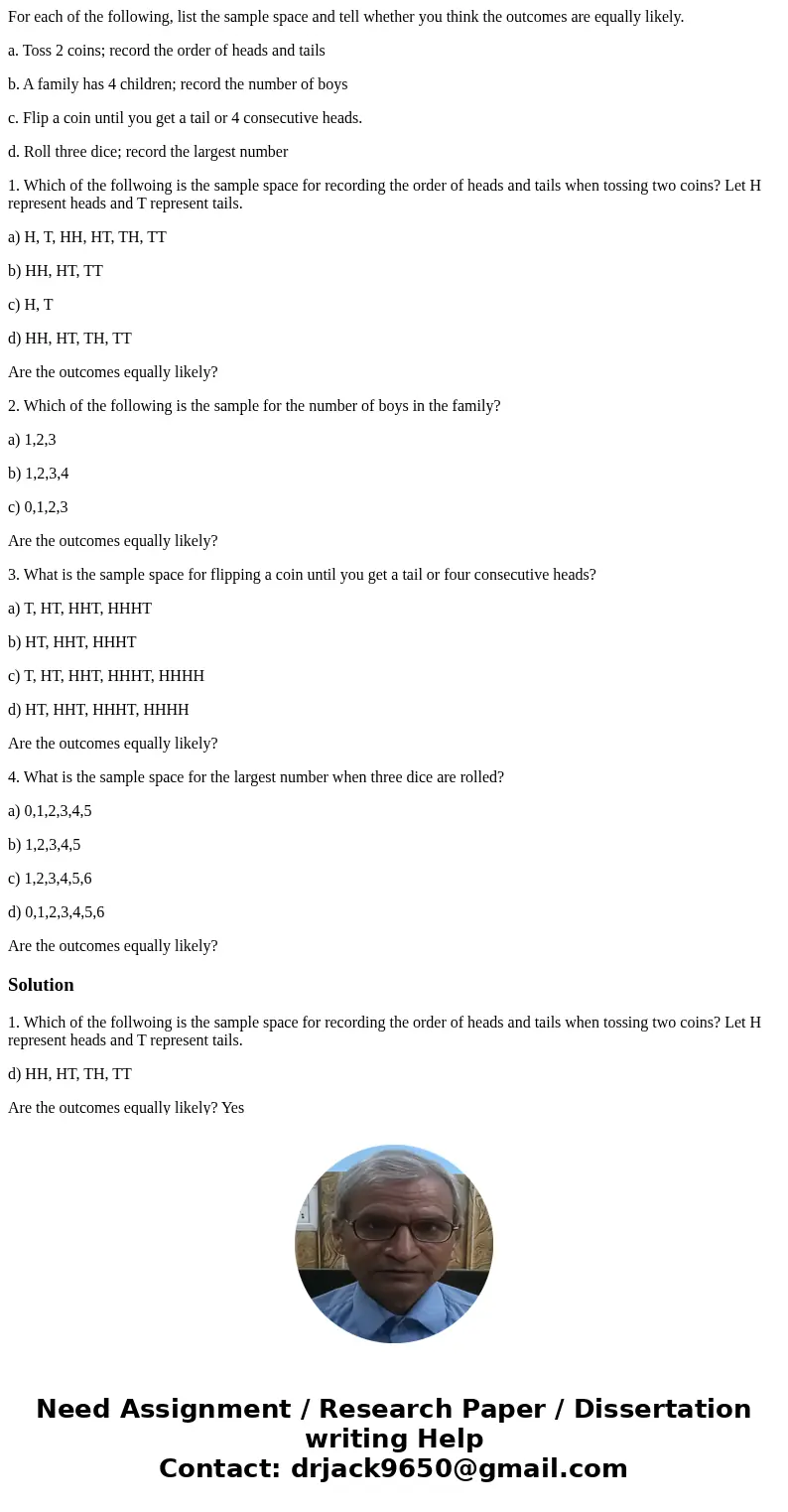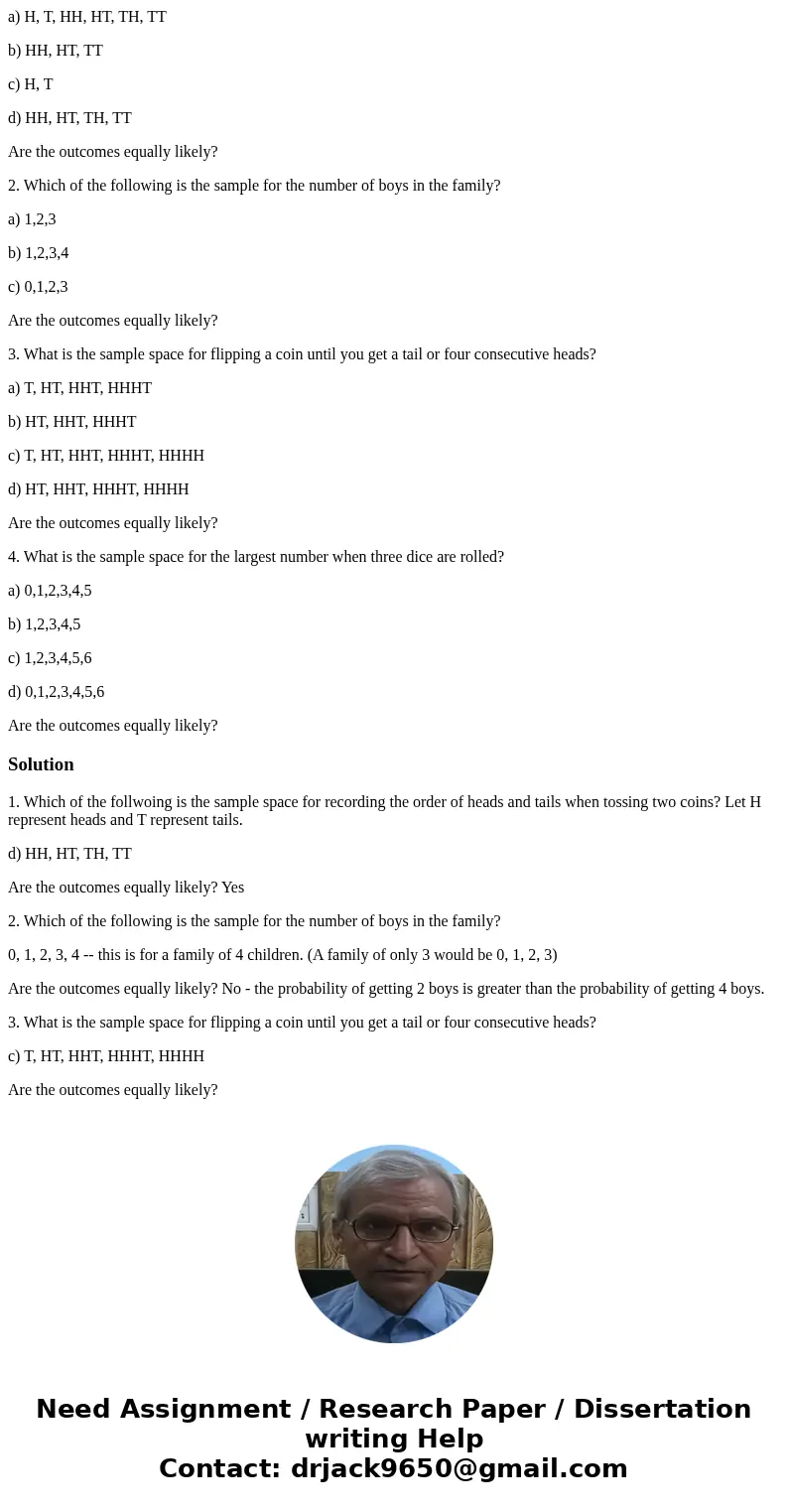For each of the following list the sample space and tell whe
For each of the following, list the sample space and tell whether you think the outcomes are equally likely.
a. Toss 2 coins; record the order of heads and tails
b. A family has 4 children; record the number of boys
c. Flip a coin until you get a tail or 4 consecutive heads.
d. Roll three dice; record the largest number
1. Which of the follwoing is the sample space for recording the order of heads and tails when tossing two coins? Let H represent heads and T represent tails.
a) H, T, HH, HT, TH, TT
b) HH, HT, TT
c) H, T
d) HH, HT, TH, TT
Are the outcomes equally likely?
2. Which of the following is the sample for the number of boys in the family?
a) 1,2,3
b) 1,2,3,4
c) 0,1,2,3
Are the outcomes equally likely?
3. What is the sample space for flipping a coin until you get a tail or four consecutive heads?
a) T, HT, HHT, HHHT
b) HT, HHT, HHHT
c) T, HT, HHT, HHHT, HHHH
d) HT, HHT, HHHT, HHHH
Are the outcomes equally likely?
4. What is the sample space for the largest number when three dice are rolled?
a) 0,1,2,3,4,5
b) 1,2,3,4,5
c) 1,2,3,4,5,6
d) 0,1,2,3,4,5,6
Are the outcomes equally likely?
Solution
1. Which of the follwoing is the sample space for recording the order of heads and tails when tossing two coins? Let H represent heads and T represent tails.
d) HH, HT, TH, TT
Are the outcomes equally likely? Yes
2. Which of the following is the sample for the number of boys in the family?
0, 1, 2, 3, 4 -- this is for a family of 4 children. (A family of only 3 would be 0, 1, 2, 3)
Are the outcomes equally likely? No - the probability of getting 2 boys is greater than the probability of getting 4 boys.
3. What is the sample space for flipping a coin until you get a tail or four consecutive heads?
c) T, HT, HHT, HHHT, HHHH
Are the outcomes equally likely?


 Homework Sourse
Homework Sourse